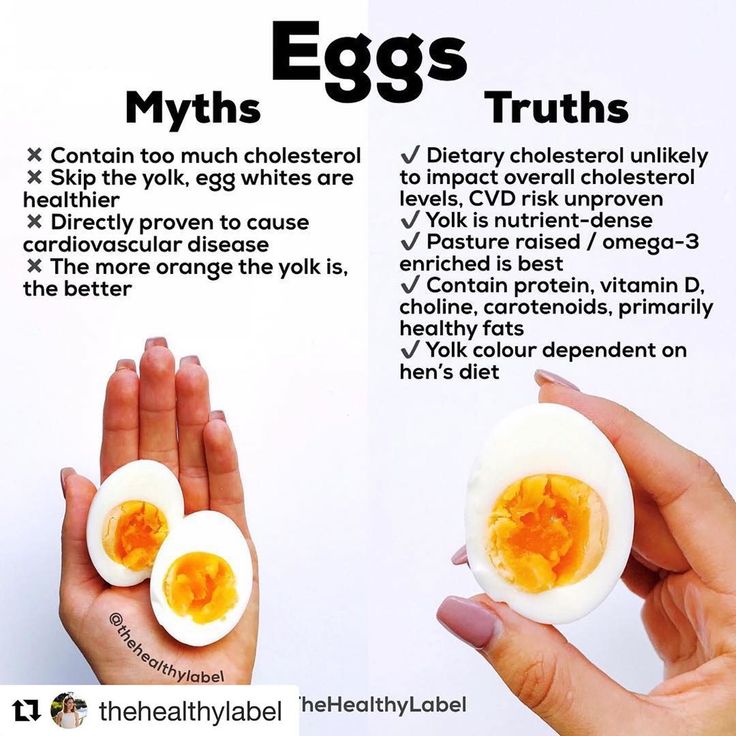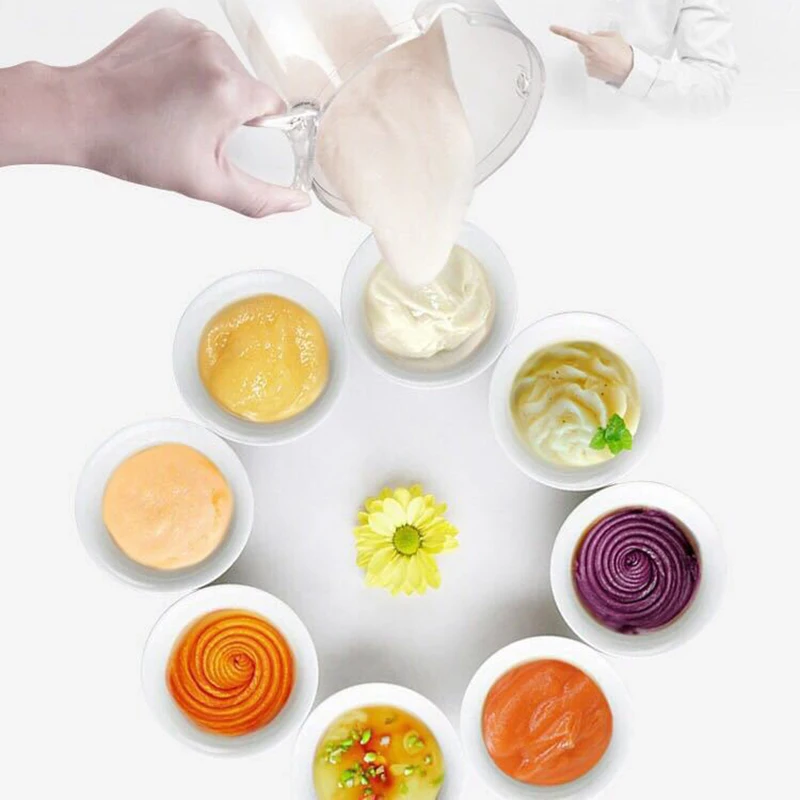6 months old baby refuses solid food
What to Do When Baby Won't Eat Solids: 7 Simple Steps
When your baby won’t eat solids, it can be stressful. Learn why your baby is refusing food and how to get them to eat solid foods with 7 simple steps!
The spoon hits the floor.
Your baby makes a nasty face.
They might even shudder or gag.
All from a bite, or an attempt to feed your baby solid foods. It’s totally unexpected when babies respond with such disdain for baby food or table food. As parents, we’re often excited about this new milestone and it’s shocking when your baby won’t eat solids.
In real life though, it’s quite common for babies to gag on solids, seem uninterested, and outright refuse food.
While knowing it’s “normal” for babies to not seem interested in solid foods, even though everyone else’s baby seems to be gulping it down by the jar full, it still leaves the question, “How do you get a baby to eat solids?”
Well, I happen to know a thing or two about that. First, because I’ve personally helped a lot of families get their babies eating solids as a pediatric occupational therapist with over a decade of experience, but also because I’ve been there with my own son…
Going through it as a mom was a whole different ball game.
Of course, I knew that it was normal for babies to refuse baby food when it was first introduced, and I also knew that some babies didn’t much prefer baby food, but my Momma heart was worried. The worrying got worse when I watched my son act like he could’ve cared less about the delicious homemade sweet potatoes that I whipped up, as he turned his face away and threw the spoon across the room.
Meal after meal.
Day after day.
And, week after week.
With each passing day that he refused to eat solids, I got more worried, and more frustrated as I’d watch the food I’d prepared literally go down the drain. There came a point when I knew I needed to do more, to put some of my OT skills to use in my home, and that’s what I’m going to share with you here, because I know how stressful it is when your sweet adorable little baby won’t eat solids.
By the end of this guide, you’ll know :
-
- Why your baby is refusing solids
- Why they used to eat solids, but don’t anymore
- How to get them to eat solids and table foods
- Ways to get them more help (if you need it)
*Keep a look out for the free printable at the end too, if your baby is struggling with table foods!
Affiliate links used below. See our full disclosure.
Why Your Baby Won’t Eat Solids
There are a lot of factors that can actually play a role in any baby’s refusal to eat solid food. We’re going to walk through each of them below, but know that the reason your baby isn’t eating solids could be any one or combination of them. With a little detective work, you’ll figure it out!
Also, age has a little do with it, and will help you hone in on what’s going on.
6 or 7 Month Olds That Refuse Solids:
-
- Baby isn’t ready yet – 6 months of age is the perfect time to introduce baby to solid foods, but sometimes the baby isn’t ready.
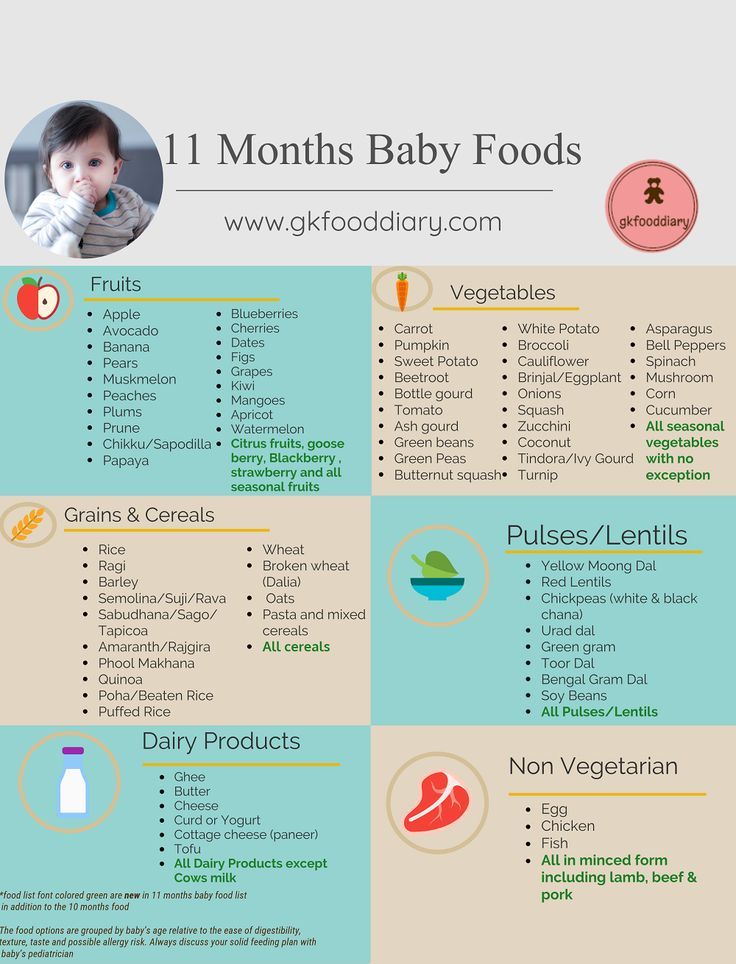 Actually, this is really common when the baby is closer to 4 and 5 months old if you’re starting a little earlier, but is still totally normal at 6 months of age.
Actually, this is really common when the baby is closer to 4 and 5 months old if you’re starting a little earlier, but is still totally normal at 6 months of age.
- Baby isn’t ready yet – 6 months of age is the perfect time to introduce baby to solid foods, but sometimes the baby isn’t ready.
Babies are still learning how to move their tongue and bring toys to their mouth, which helps them get used to having foreign objects in there. Each baby is unique and yours may just need some practice if they are in this age range.
They also may still be developing good trunk and head control, without it, eating is difficult!
Check out the American Academy of Pediatrics recommendations for introducing food and make sure your baby is ready for solids. You can also find my guide to Introducing Solids with more details on milestones to look for when 6 months old.
-
- A strong tongue thrust reflex – Most babies usually lose this reflex that helps them not choke if something accidentally gets into their mouth around 4-6 months, but it may linger for some.
If you notice that your baby still thrusts their tongue out every time you touch the spoon to their lips, they may need a little more time. It’s really hard for them to eat when they keep shoving their tongue out of their mouth!
It’s really hard for them to eat when they keep shoving their tongue out of their mouth!
-
- Doesn’t like the way food feels – Solid food is something so new and unfamiliar to babies, it can take a while for them to get used to the new texture in their mouth. Many babies do in fact get used to the feeling of solids, but some don’t.
Read more about that below under sensory.
8, 9, or 10 Month Olds That Refuse Solids:
-
- Sensory – By 8 months of age, most babies are ready from a developmental standpoint, and at this age, it’s definitely time to get the ball rolling, but some babies (like my son) still refuse. One of the most common reasons why older babies still won’t eat solids is because they don’t like the texture.
This boils down to the way their brains are thinking about (or processing) the sensory input they feel (aka the food in their mouth).
This isn’t a bad thing and doesn’t necessarily mean they have any kind of diagnosis, but it does mean we need to take some extra steps to help them tolerate the texture of food better. You can head to sensory issues with food to learn more.
You can head to sensory issues with food to learn more.
Babies that are sensitive to different textures usually gag immediately at the sight, touch, or taste of food.
-
- Coordination – Eating actually requires a lot of muscle coordination from opening the mouth, pulling food off of a spoon, closing the mouth, and effectively swallowing.
We take this for granted and don’t even think about it, but for some babies, it just isn’t coming natural.
Babies that are having difficulty with coordination, or oral motor skills (find exercises with that link,) usually gag when trying to swallow or after getting the food into their mouth.
Or, the food may fall out frequently, and babies won’t eat solids because they just don’t know how. When they don’t know how to eat, it isn’t that fun, and there isn’t a lot of interest.
If gagging is something you’re concerned about or is happening often, read more in guide on baby gagging.
-
- Food allergies – Believe it or not, sometimes babies will avoid certain types of foods because they’ve associated an upset tummy with the yogurt or cheese for example. It doesn’t happen all the time, but it’s something to consider, especially when it’s very specific allergenic food.
The most common types of food allergens are dairy, egg, soy, wheat, tree nut, peanut, fish, and shellfish. Severe eczema is another indicator that food allergies might be present.
Sometimes, signs become more obvious when cow’s milk is introduced.
-
- Not into baby food – While this is probably the least likely reason your baby is refusing solids, it is possible.
If you’ve consistently offered baby food or infant cereal with no interest from your baby and you don’t see any of the sensory or coordination signs we talked about above, then you might just might want to move on to table and finger foods.
One way to do that is using a Baby Led Weaning approach, before you do that though read my BLW pros and cons.
*Get a seat in my free workshop and learn 5 big feeding mistakes that might be stopping your child from learning to eat. We’ll send you a free workbook too!
Why Baby Won’t Eat Solids Anymore (They Used to?)
-
- Some teething babies won’t eat – While it’s not as common, some babies start off eating baby food and then suddenly stop. A frequent cause of this is teething, and some babies teethe for a very. long. time. If your baby’s teeth are swollen, red, and seem to hurt, then this is likely the cause.
Try putting some teething gel on their gums 15-20 minutes before a meal. If you see an improvement, this is likely the culprit. Here’s a natural teething gel I like, but check with your doctor first.
-
- Going through a phase – Babies may get a little bug or slight cold that we aren’t even aware of or have some negative experience with food that seemed too minor to us as the parent, but makes them leery of eating.

- Going through a phase – Babies may get a little bug or slight cold that we aren’t even aware of or have some negative experience with food that seemed too minor to us as the parent, but makes them leery of eating.
If it’s the latter, some sensory sensitivities can develop if a baby goes for a while without eating any food. If this is the case for your baby, you’ll want to follow the steps below and focus on not pressuring your baby to eat. It’s really important that mealtimes are a positive experience.
-
- They’ve outgrown baby food – If your baby is later in their 7th month or older, they may just be sick of solid baby food and ready for the real deal table and finger foods. That may mean it’s time to change up baby’s diet!
I know that seems scary and makes some parents nervous. Don’t worry though, if you think this is why your baby suddenly won’t eat solids anymore, then head to how to transition to table foods.
How to Get Your Baby to Eat Solids
1. The absolute first thing I do with a baby not eating solids is to put a scoop of baby food or some other pureed food like yogurt onto the tray of their high chair.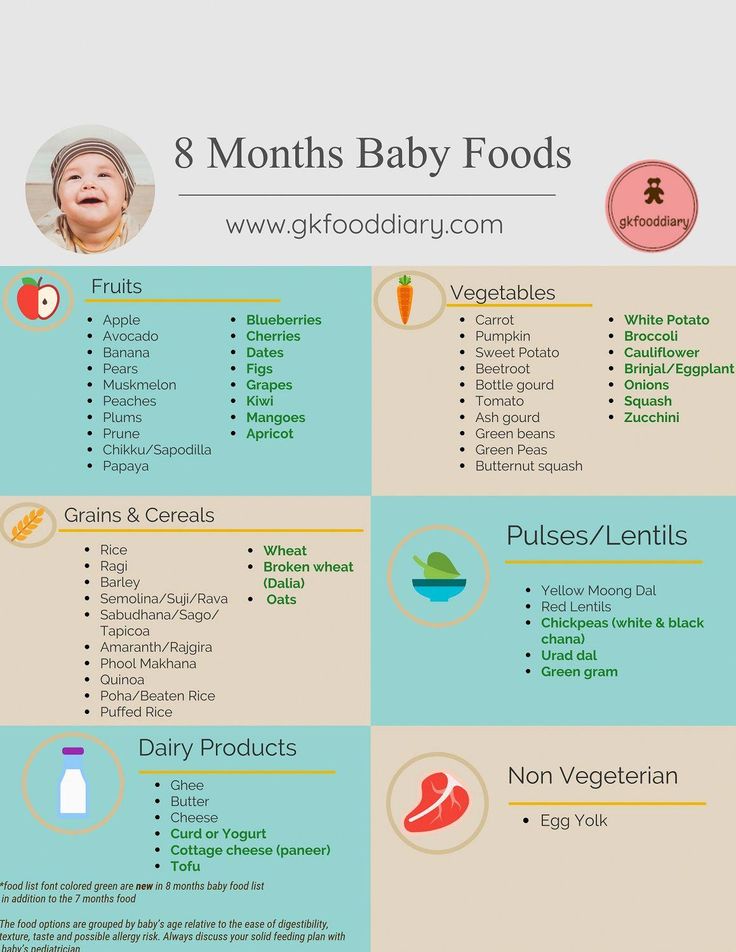
I know, the mess. It’s soooo important for babies to get messy though! If you’re skeptical, you’ve got to read: Why Babies Should Get Messy Eating. It will totally change your perspective and give you the inspiration to embrace the mess.
2. Encourage your baby to touch the food, but don’t force. Be silly and keep it light. Demonstrate.
If they refuse, try and try again. In fact, at every single meal, put a dollop of that food on their tray or even in a bowl that they can play with and touch. If they won’t touch after a few attempts, offer a spoon for them to stick into the food too.
This is one of my favorite beginner spoons that makes it really easy for baby to get some food onto it.
3. Once your child touches the solid food, you’re on your way! Allow them to touch, spread, and put it all over the tray and themselves. This is wonderful for their sensory processing and will make a huge difference in helping them get used to the texture of solids.
If they get upset once they’ve touched the food, or that they are now all messy, be very calm and reassuring.
Have a wet washcloth ready and quickly wipe them down. And, if this is how they respond, it’s a sign that you need to practice playing with these foods a lot! The more they touch and interact with the food, the closer they’ll be to eating it.
4. When baby has the food on their hand and they’re at least tolerating it, show them how to take their hand to their mouth, so they can taste it. You may need to demonstrate if baby won’t let you guide their hand.
Repeat this several times. After they eat from their hands several times, offer them some solid foods from a spoon.
5. You can also give them a large whole raw carrot or celery stalk at meals. I mean the whole darn thing. The point isn’t for them eat it (and if they can get pieces of it off, take it away), but for them to put it into their mouth.
When they do this, it helps desensitize their gag reflex and they get to practice biting, chewing, and moving their tongue around. It’s amazingly powerful and can make a big impact in a baby accepting solid foods. Make sure you demonstrate and keep offering at every meal.
It’s amazingly powerful and can make a big impact in a baby accepting solid foods. Make sure you demonstrate and keep offering at every meal.
6. Be consistent and patient. I can’t stress this enough, even though it’s often easier said than done! Have regular meals and follow the above steps 1-3 times a day for every meal. You can find sample schedules for babies ages 6 – 7 months, 8 – 10 months, and 11 -14 months if you’d like a guideline to follow.
7. Focus on meals being positive experiences for the baby, even if they aren’t eating anything. As parents, we can bring a lot of stress with us to meals, which can be hard to hide. But, this is definitely a “fake it til you make it” kind of situation.
Take a deep breath, put on a happy face, and work on the above steps. Going into the meal with no expectations of them eating anything will also help keep your frustration level down.
To learn MORE, grab a seat in my free online workshop.
In it, you’ll learn 5 big feeding mistakes that are stopping your baby or toddler from learning to eat table foods! It’s an eye opener and will help you take steps to give them the best start with eating table foods well (even if it already isn’t going well):
Strategies to Use Outside of Meals for Baby’s Refusing Solids
There are a few really powerful strategies you can use away from the highchair that will directly impact your baby eating solids during meals. Might seem strange, but if you suspect your baby is refusing because of sensory or coordination difficulties, doing these activities can be total game changers:
Might seem strange, but if you suspect your baby is refusing because of sensory or coordination difficulties, doing these activities can be total game changers:
-
- Brush their teeth – If you haven’t started yet, brush their teeth, and when you do, make sure you’re getting all over their gums and the sides, as well as the top of their tongue.
It only takes a few seconds, but it helps to both desensitize their mouth and improve coordination because the tongue gets practice moving in different directions. If your baby doesn’t like it, take it slow, and try often.
The more often you brush, the bigger the effect. Try for one to three times a day, and consider a vibrating toothbrush (yes, even for babies) for more powerful input in their mouth.
-
- Play in sensory bins – That may be a new term to you or you might be wondering what the heck that has to do with eating, but playing in different textures is super powerful and helps the sensory system understand different textures better.
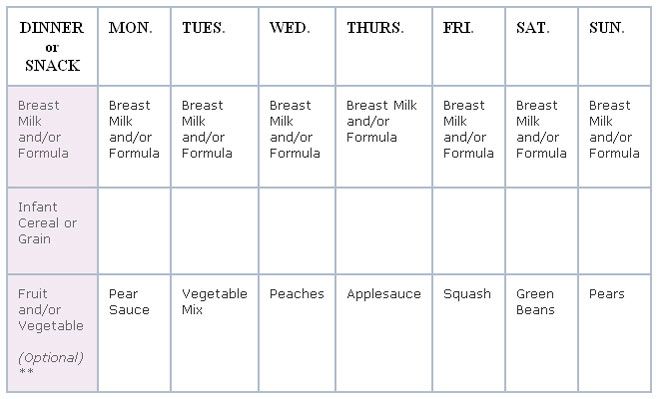
- Play in sensory bins – That may be a new term to you or you might be wondering what the heck that has to do with eating, but playing in different textures is super powerful and helps the sensory system understand different textures better.
This correlates directly to eating. I can’t tell you how many times I’ve seen a kiddo that plays in sensory bins frequently, suddenly start eating more foods (my son included). Head to Sensory Bin Ideas to learn how to set one up.
-
- Chew on toys – So many babies that won’t eat solids never put toys or teethers in their mouth, which is really easy to overlook. If this is your baby, pull out a bunch of different teethers and have them around the house.
Demonstrate. Dip them in food or juice. Play with them in the bath. The more often they get teethers and toys into their mouths, the more it will help improve the coordination their mouth muscles need to eat and desensitize their gag reflex and sensory system.
I really love this teether because it gets in the back of the mouth and this one vibrates (all my friends get it from me at their baby shower).
Help for the Baby Not Eating Food
I’m not just talking about solid baby food or purees. You may have a baby that won’t eat any type of food, like puffs, cut up fruit, or toast. They’re getting older and older. You’re getting worried.
You may have a baby that won’t eat any type of food, like puffs, cut up fruit, or toast. They’re getting older and older. You’re getting worried.
Following the above steps will be incredibly important for your babies too, especially the strategies for outside of a meal. But, you’ll also want to use the steps I outline in getting your baby to eat table foods.
That’s a whole different animal all within itself, and there are some targeting tips that can make all the difference in your baby eating food.
You’ll want to focus on small pieces, and by 9 months of life be attempting table or finger foods.
While I don’t want you to worry, I know it’s tempting to keep waiting it out, and unfortunately, some doctors advise this quite often. This often does not help your baby to learn to eat wide variety of foods.
Babies instinctively learn to chew between roughly 8 and 11 months of age, when they move past that, it can be much harder for them to accept foods. It’s not impossible, and the same steps apply for older children, but it’s much better to be proactive then taking a “wait and see” approach.
It’s not impossible, and the same steps apply for older children, but it’s much better to be proactive then taking a “wait and see” approach.
Puffs, lil cheese curls, and baby mum mum’s are all great for baby’s first foods.
When to Get More Help for a Baby Not Eating Solids
If your baby doesn’t like solid baby food and won’t accept any table foods of finger foods by 9 months old, it’s a good idea to get an evaluation either from the free early intervention program in your state or from a feeding therapist.
You can also read more about typical feeding milestones for babies just to have a reference point. As I said earlier, all babies develop at a different pace and needing a little more help is very common.
Get My Free Printable: Learn to Eat Table Foods Cheat Sheet
There seem to be more questions than answers when you’re under the daily stress of your baby or toddler not eating table foods. Not to mention all of the well-intentioned bad advice that’s often given. Let’s clear that up.
Let’s clear that up.
I’ve created a free 5 page guide that clearly lists the steps to teach your baby or toddler to eat table or finger foods, plus a FAQ guide for parents to ease their worries when their babies won’t eat!
Get your free Learn to Eat Table Food Cheat Sheet printable here!
More on My Baby Won’t Eat Solids
How to Teach Your Baby to Self-Feed
Mega List of Table Food Ideas
How to Teach Your Baby to Drink from a Straw
The Best Mealtime Utensils and Tools for Babies
Click here to Pin This! (You’ll have as a quick reference)
Alisha Grogan is a licensed occupational therapist and founder of Your Kid’s Table. She has over 17 years experience with expertise in sensory processing and feeding development in babies, toddlers, and children. Alisha also has 3 boys of her own at home. Learn more about her here.
7 Month Old Feeding Schedule with Free Printable
Get a printable 6 month old feeding schedule with helpful tips to use and adjust for your baby through the end of their 7th month. And, grab some bonus feeding tips that will help you safely and confidently feed your baby!
And, grab some bonus feeding tips that will help you safely and confidently feed your baby!
Affiliate links are used below. See our full disclosure.
I know how fast the first year goes as a mother of three, but I am still in disbelief that my baby just turned 8 months! Feeding each of my three babies have been completely different experiences, as they are all unique little beings. James (the 8-month old) is loving meal times and is quite an eater, for now anyways.
I think part of his success in eating has been due to the 6 month feeding schedule I’ve had him on since he started traditional home-made baby food at 5.5 months. Read about how I, as a licensed occupational therapist introduced baby food for the first time if you’re looking for some tips and tricks.
*These 6 and 7 month old feeding schedules are also the ones I’ve recommended to the families I work with as a licensed occupational therapist that specializes in feeding babies and children.
As we begin this 8th month, I can see our schedule evolving, and I thought it might be helpful if I shared how I created his feeding schedule for 6 months old through 7 months old.
During these last two months, I’ve reflected a lot on how much James is benefiting from slipping into an already very established eating routine (there are some benefits to being the third child!).
Whether it is your first, second, or even third child, it can be challenging to make this transition from just bottle feedings to breast or bottle feedings AND baby food especially because every child is different.
In my experience, parents often have a lot of questions about how to set up these routines. While I think there is value in that, this schedule is not a hard and fast rule for every baby.
We all know that every baby is unique, but as parents, it’s hard not to compare. Try to avoid playing the comparison game with these feeding milestones, as long as you’re giving lots of positive opportunities for interactions with food.
I should also note that James is breastfed, and only takes an occasional bottle when I’m away from the house (find help for getting a breastfed baby to take a bottle). However, he doesn’t eat frequently like some nursing babies do. If your baby has lots of mini meals, this 6 month old eating schedule may look a little different.
It’s meant to be a guideline to starting a flexible routine that you can tailor to your own needs. This schedule is great for bottle babies, too!
And, if you’re starting to think about those table foods and what ages specifically you can start giving them to your baby, then check out When Can Babies Eat Cheerios?
*Times are given in a range of possible start times, not duration. Also, you’ll find some links throughout the schedule for my favorite cups and foods.
6:30-7:00 AM: Wake-Up – Breastfed or bottle upon waking
(This is one of my favorite bottles for breastfed babies)
7:30-8:00 AM: Breakfast – Water available in a sippy cup, about 1/4 cup of various homemade/store bought baby food, and a meltable crunchy food like puffs and/or soft cubed food (see note below).
(These are a great first sippy cup)
9:00 AM: Nap
11:00 AM: Breastfed/Bottle
(One of my picks for bottle fed babies. Keep in mind your baby might be ready for faster flow nipples at this age, as well.)
12:00 PM: Lunch – Water available in a sippy cup, meltable crunchy foods like rice husks. (I don’t look for James to consume much here and don’t offer baby food, but I like him sitting with us and “snacking” a little so that he can get used to the schedule he ultimately will have.)
1:00-2:00 PM: Nap
4:00-4:30 PM: Breastfed/Bottle
5:30-6:00 PM: Dinner – Water available in a sippy cup, about 1/4 cup of various homemade/store bought baby food, and a meltable crunchy food like these wafers and/or soft cubed foods (see note below).
7:00-7:30 PM: Breastfed/Bottle
7:30-8:00 PM: Sleeping for the night
Where to Feed Your 6 and 7 Months Old
My son is sitting in a Tripp Trapp chair, which I love because he’s pulled up to the table eating with the rest of us without a tray. The majority of the time it works out that he is able to eat at the same time as the rest of us.
The majority of the time it works out that he is able to eat at the same time as the rest of us.
However, the Tripp Trapp is an investment, a more budget friendly high chair is this one from Ikea, but be sure to add a foot rest for stability so that baby is in a good position to eat well. Check out why seating positioning matters when it comes to eating with this article.
How to Give 6 and 7 Month Olds Water to Drink
Most babies will be drinking water during their meal from a sippy cup until around 9 months. This is one of my favorite sippy cups to start with.
James started drinking from a sippy around 7 months old, and at that time, I switched him to a straw cup at meals (learning to drink from a straw at this age is very early though, most babies learn around 9 months old).
A sippy cup is perfectly appropriate for this age, but look for your baby to be using a straw by one year old. When you’re ready, learn how to teach your child to drink from a straw here.
Now is also a great time to begin offering small sips of water from an open cup- with your help, of course, unless you want mealtime and bath time to happen at the same time. Here is an open cup you can try that is perfect for small hands.
When to Feed Your 6-7 Month Old
You will see that many people recommend 1-2 feedings a day at this age, and that is totally fine. While there were a few times we couldn’t squeeze in two meals on a busy day, I made it a priority to do two meals a day from the time he turned 6 months.
This consistent exposure was very beneficial, and I think is best for most babies. It can seem like a pain at times, but it is worth it if you can make it work.
As mentioned above, if your baby prefers many small breastfeeding sessions a day, that is okay and this schedule can still work for you.
Try to focus your schedule and routine around opportunities for baby to join you for meals at the table with solids and water in a cup, not so much on when they are nursing or taking a bottle.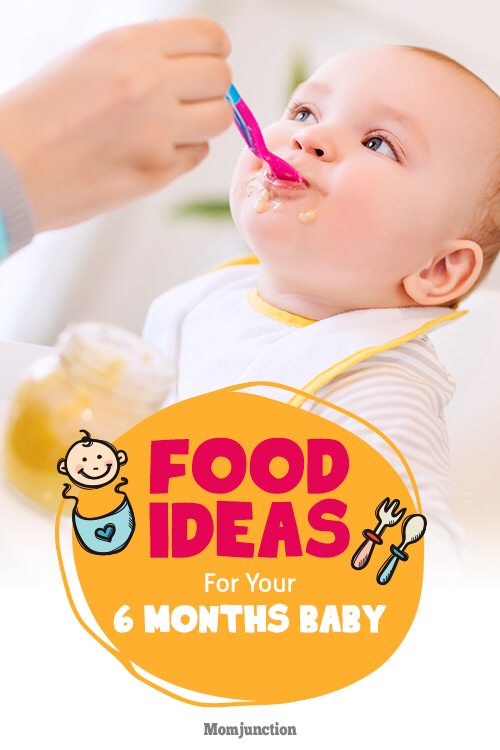
The goal over time is to offer meals and snacks in a predictable consistent routine. You know your baby best, so definitely continue to breastfeed flexibly at 6 and 7 months, and use this guide to help make it work for your unique situation.
Take note of how well your baby eats in relation to how tired he is, how much time he has had to play, and when he had his last milk feeding.
You may want to adjust your times based on his hunger cues and energy levels. Even adjusting times by 10 or 15 minutes can make a big difference on how much your baby wants to engage with food at meals!
Set your expectations low, and focus on a pleasant experience during meals, not volume of food. It is completely normal to have a meal where your baby only has a few bites. This is NOT his main source of nutrition right now.
6 – 7 Month Feeding Schedule Tips
Babies learn so much about eating by watching us, and has been wonderful to watch how he loves being part of this family time, even at such a young age.
He gets excited to come to the table when everyone is there and will actually fuss if he sees everyone at the table without him!
In the 6 month eating schedule above you read to include “meltable crunchy” foods. Wondering what those are? They’re all of those first table foods you find in the baby food aisle like Biter Biscuits, Puffs, Rice Husks,buttery soft Crackers, etc.
A good rule of thumb is seeing if the food easily breaks down when wet or crushed. In the beginning of the 6th month, you are going to just let them mouth on some of these meltable crunchy foods, and help them put small pieces into their mouth.
Watch them closely, but keep in mind some gagging is normal. If this feels too soon for you to introduce “real” foods, you can wait 1-2 months, but want to begin around 8 months.
By the end of the 7th month, they will likely be feeding themselves some easy to pick up pieces of the dry food and chewing them a variety of these well.
Once they are eating these well, they can begin to have soft pieces of foods cut into cubes like ripe bananas, cooked zucchini, and banana bread. Anything that is very easily mashed between your finger and thumb is likely safe for baby to eat by this stage, even without teeth.
See my post on transitioning your baby to table foods for more details.
As your baby eats it’s important to allow them to get messy. Don’t worry about wiping their face off until they’re finished eating. Strip your baby down to his diaper or plan a bath for after meals. See more on why it’s important for babies to get messy!
While this is a time to just explore foods, if your baby is underweight and you’re trying to beef up the calories you’re giving them, then check out these high calorie baby food combinations and some extra tips to maximize what your baby is eating.
These months are very important for establishing good eating skills, and can go a long way in how your child eats throughout childhood. This feeding schedule for 6 and 7 month olds, and all the tips you’ve read are a fantastic foundation for continued happy eating.
This feeding schedule for 6 and 7 month olds, and all the tips you’ve read are a fantastic foundation for continued happy eating.
However, if your baby is stressed at mealtimes or is rarely consuming any food during meals by the end of the 7th month, then I would discuss your concerns with your doctor, and consider setting up a feeding evaluation through early intervention (free if you are in the states) or with an occupational therapist or speech therapist through feeding therapy.
Don’t panic if you see some of these challenges with eating, it’s more common than you think.
Some babies just need a little extra help, and that help can make a world of difference and really ward off major picky eating problems in the future.
You can also check out Feeding Red Flags, which will help you pinpoint if there’s a problem, or if your baby is gagging a lot, head to the baby gagging guide for tips on moving past it.
Get a PDF of the 6 Month Feeding Schedule!
Want a printable of this schedule? You got it… just click here and you can download and print this schedule for a quick reference.
More Baby Feeding Schedules and Tips
Feeding Schedule for 8, 9, and 10 Month Olds
Feeding Schedule for 11-14 Month Olds
Mega List of Table Foods for Your Baby
Teach Your Child to Self Feed
Did you pin this?
You’re going to want to save this, you can get to all the other feeding schedules here as your baby continues to grow!
Alisha Grogan is a licensed occupational therapist and founder of Your Kid’s Table. She has over 18 years experience with expertise in sensory processing and feeding development in babies, toddlers, and children. Alisha also has 3 boys of her own at home. Learn more about her here.
Puree again? What to do if the child eats only crushed food
Home
\
Ekaterina Maslova
\
Puree again? What to do if the child eats only crushed food
\
Ekaterina Maslova
Nutritionist
all expert articles
{{text}}
Puree again? What to do if the child eats only crushed food
A variety of mashed potatoes and pureed mother's soups are adored even by grown-up kids: the usual taste, a long-familiar texture that is so easy to swallow. Why waste time chewing when food can be so convenient? But mom likes it less and less: she’s fed up with grinding each serving with a blender, the pediatrician insists that it’s time to switch to solid food, and in general it’s not clear why the child refuses to eat in pieces? How to overcome the baby's fear of "adult" dishes and teach him to chew - in our article. nine0003
Why waste time chewing when food can be so convenient? But mom likes it less and less: she’s fed up with grinding each serving with a blender, the pediatrician insists that it’s time to switch to solid food, and in general it’s not clear why the child refuses to eat in pieces? How to overcome the baby's fear of "adult" dishes and teach him to chew - in our article. nine0003
Are you in a hurry?
Experts from the UNICEF European Bureau say that by the age of two, a child can already chew the same food as adult family members. But the terms are rather arbitrary: someone can quite cope with the pieces by the age of one, while for other kids the development of the skill is delayed. Everything is very individual, so take a closer look at your baby, his skills and habits. Try to understand if he is ready for solid food, and if so, what prevents him from starting to chew? If you can't figure it out, seek help from a pediatrician, nutritionist, or pediatric nutritionist. nine0003
nine0003
Sometimes it can be painful for a baby to chew or swallow. Discomfort and pain cause wounds from stomatitis, swollen gums during teething, early caries. Monitor the condition of the oral cavity and teeth, and if you notice a problem, make an appointment with the dentist.
And it's hard for mom
Perhaps the mother does not know when the baby can start eating from the common table. Or she is just comfortable feeding him mashed potatoes from jars, because cooking takes a lot of time. It happens that switching to solid food is simply scary: friends had a negative experience or someone shared their failures on social networks. Sometimes, in order for a mother to decide to give food in pieces, a simple support from relatives, help during cooking and feeding is enough. You may need to consult a pediatrician or psychologist - they can help mom overcome doubts. nine0003
Not a race, but a marathon
Quickly accustom the child to the pieces will not work. He must mature for this, get used to new sensations. Equally important is the readiness of the body to chew solid food: the number of teeth, the development of chewing skills. Sometimes time is all a little foodie needs. Don't rush it!
He must mature for this, get used to new sensations. Equally important is the readiness of the body to chew solid food: the number of teeth, the development of chewing skills. Sometimes time is all a little foodie needs. Don't rush it!
You need to move smoothly to eating in pieces. To begin with, every few days, instead of mashed potatoes, offer your baby a finely chopped dish, crushed to grains. When the child gets used to it, leave a few small pieces in the serving, and then gradually increase their size and quantity. nine0003
Food not fun
Under TV or a fairy tale, a baby can even eat unloved food. But there is little benefit from it, and the skill of chewing solid food does not develop: the child mechanically swallows food. Do not distract him with video and audio while eating, do not form unhealthy habits.
Many children are not ready for the simultaneous change in both the taste and the consistency of the product. To reduce the likelihood of another “I won’t!”, You can (still calmly and regularly) offer the child to replace the familiar cottage cheese, for example Rastishka with strawberries for Rastishka with strawberries, banana and cookies. nine0003
nine0003
Rastishka Products
Expert Articles
Culinary Advent: we are waiting for the holiday tasty and healthy
"Don't cry, take a candy!", or Why sweets should not become a consolation
From "I don't like pumpkin!" to "I want pumpkin porridge" - one step
nine0004 Fashionable bento: how to assemble a useful and stylish lunch box{{name}}
This site uses cookies to collect information about you. This is necessary to improve the site. By continuing to use the site, you agree to the use of cookies and their provision to third-party partners. You need to accept this or leave the site.
Child refuses solid food
11/17/2020
Child refuses solid food: why does this happen, what does it threaten and what to do about it? nine0003
So, what is the chewing reflex, and at what age does it develop? Let's look at these issues in more detail.
The chewing reflex is acquired and begins to develop with the introduction of complementary foods. The first complementary foods are introduced in the form of puree at the age of 4-6 months. Puree is thicker than breast milk or formula, so in order to swallow it, the baby must work with his jaws, tongue, lips.
At what age is a child ready for the introduction of more solid foods? nine0082
Every child is different, but there are certain periods during which the child must master certain skills. At about the age of 10-12 months, the child develops chewing teeth, with the help of which he performs the act of chewing. This means that the baby is ready for the introduction of solid foods. By the age of 2, he should already be chewing food well.
Signs that the child is ready for solid food:
- shows interest in adult food that is not mashed. nine0089
- does not begin to suck the food offered to him, but tries to chew.
- the child puts a spoon in his mouth and this does not cause him to gag.

What could be the reasons for not eating solid foods?
There are quite a few reasons:
- Early transition from breastfeeding to artificial.
- Abrupt transition to solid food. The kid just does not understand what to do with it.
- Delayed introduction of complementary foods. nine0089
- The child is afraid. This may be due to the fact that earlier he choked and was frightened.
- The child is lazy or simply does not want to eat.
- Vomiting occurs while eating. This may be due, for example, to the fact that a spoon is deeply inserted into the oral cavity or too much food, large pieces.
- Acute diseases accompanied by fever, inflammatory processes in the oral cavity.
- Organic pathology. To exclude it, you may need to consult narrow specialists: a neurologist, a gastroenterologist, an otolaryngologist, a dentist. nine0089
What are the consequences if a child cannot chew for a long time?
- Development of malocclusion.

- Violation of the correct pronunciation of sounds.
- Digestive problems.
How, after all, is it right to accustom a child to solid food?
- Breastfeeding for at least 6 months. Since children who receive formula from a bottle make less effort to get food, which means that their chewing muscles are less developed. nine0089
- Use of teethers, nibblers.
- Timely introduction of complementary foods.
- Reduce grinding gradually. First grind with a blender, then with a fork, grate, pass through a meat grinder, cut into small pieces with a knife. If canned foods are used, then according to age.
- Introduce new foods gradually, do not introduce new foods when the child is sick.
- Feeding without TV. nine0089
- Be patient! This is a fairly long process. At first, the baby may not be able to chew food well. You can not scream, scold the child if he refuses food and spits it out. This can lead to the fact that the child refuses to eat solid food at all.





